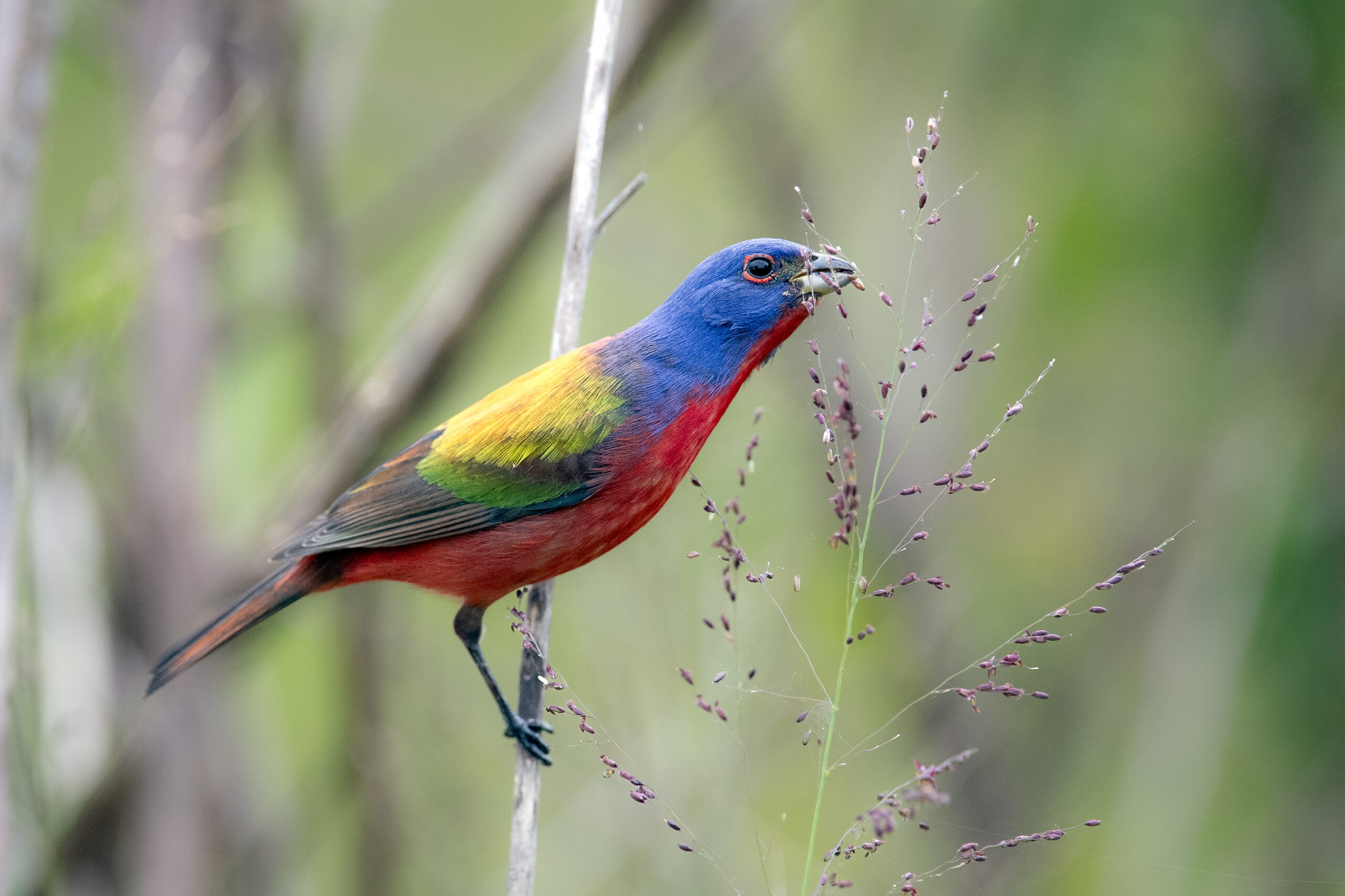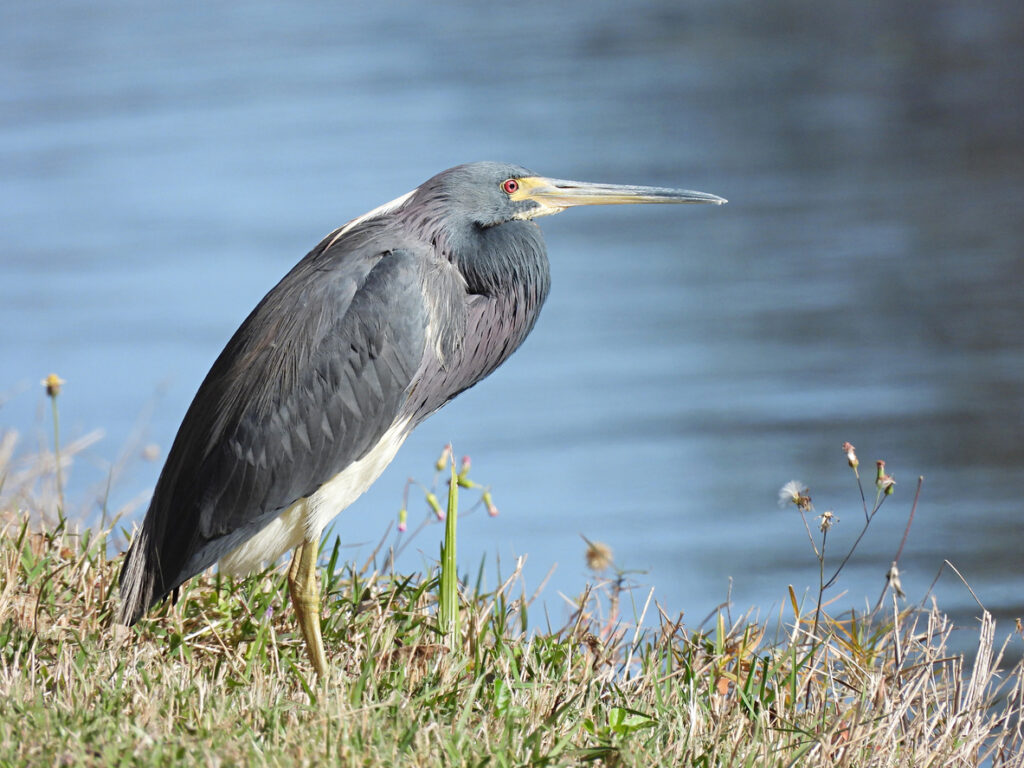
Birds to keep an eye (or ear) out for in Louisiana this summer and beyond
Painted Bunting
Baton Rouge Audubon Society president Jane Patterson has long been able to identify south Louisiana birds with only a hand to the ear. But when it comes to the multicolored plumage of one of her favorite summer species, the Painted Bunting (pictured above), seeing is believing. “They are actually fairly common in rural areas of south Louisiana,” says Patterson, “but are easy to overlook because their color can fade in the shadows of the shrubs and weedy areas they prefer.” Listen for the high-pitched rambling of the males as they defend their nests on the trail by the Pennington Biomedical Research Center, along the railroad tracks at BREC’s Frenchtown Road Conservation Area, and along the Mississippi River levee. Read on for more of Patterson’s tips on where to spot beautiful birds around town.
Barred Owl

This large, nocturnal bird of prey occasionally reveals itself to hunt during daylight hours, though its presence can best be determined by listening for the tune of its famous query: “Who cooks for you? Who cooks for you all?” Preferring to nest in natural tree cavities while raising a brood of one to three owlets each year, Barred Owls seem particularly at home in the cypress-tupelo forests of Bluebonnet Swamp. “One of the reasons they like this habitat is because they are very fond of crawfish, and can be seen watching the shallow water for movement—even swooping down to catch prey,” says Patterson.
Tricolored Heron

Once known as the Louisiana heron, this coastal wading bird can actually be found hunting small fish and amphibians as far south as Brazil. Don’t let its small size fool you, though; unlike its larger, still-as-a-statue cousins, the Tricolored Heron—bedecked in gray-blue, burgundy and white—can be a splashy hunter, especially when displaying its telltale white plume and blue bill during mating season. “These birds are less common around Baton Rouge than other types of herons, particularly the all-white Great and Snowy Egrets,” says Patterson, “but they can be seen most of the year in the shallow edges of the University, City Park and Capitol lakes.”
|
|
Pileated Woodpecker

Stroll under the mature boughs of Bluebonnet Swamp, Forest Community Park or neighborhoods like Old Goodwood and Magnolia Woods, and you might just spot the largest woodpecker in the U.S.—or at least its pointed red cap of feathers. If these black-and-white, crow-size birds aren’t drumming on decaying wood to carve out their distinctive rectangular hollows, or stabbing at small insects, they may let loose a series of high, piping laughs similar to those of their cartoon counterpart, Woody Woodpecker. An eagle-eyed observer, says Patterson, may even spot the red “mustache” bedecking the male members of the species.
This story originally appeared in inRegister. To keep up with Baton Rouge business and politics, subscribe to the free inRegister@Home e-newsletter here.
|
|
|
